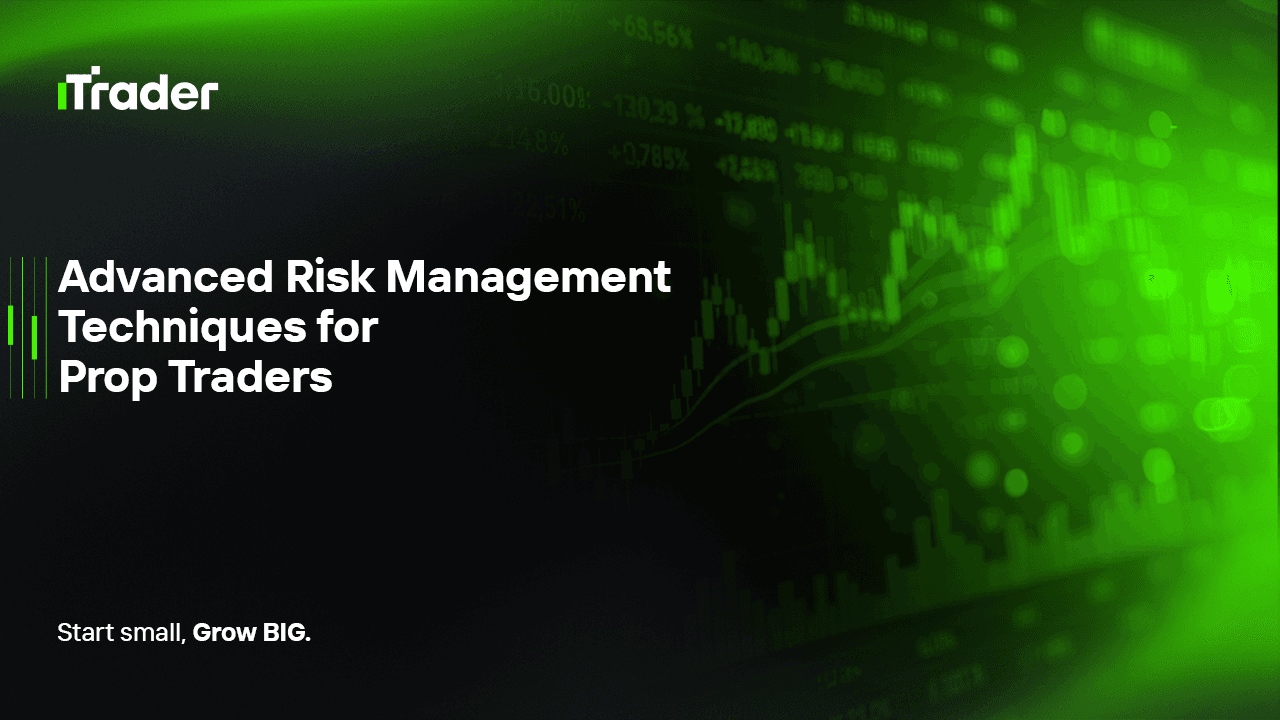2025-07-21
Trading for a proprietary firm differs significantly from retail trading, primarily in the approach to risk and responsibility. Managing someone else's capital under strict performance thresholds requires a more refined, systematic, and adaptive risk management framework.

In this blog, we break down the advanced techniques used by prop traders to control exposure, respond to changing conditions, and ensure long-term strategy survival.
AI Summary:
This blog outlines advanced-level risk management strategies specifically designed for professional proprietary traders. In volatile and uncertain markets, preserving capital and maintaining consistent performance require more than basic tools. We explore dynamic position sizing, correlation-aware exposure, trade clustering, adaptive drawdown controls, risk-of-ruin analysis, and Monte Carlo simulation, among other modern methodologies. These approaches help traders navigate institutional expectations, reduce structural risks, and develop robust trading systems.
For prop traders, the number one priority is not just generating profit, but avoiding destruction. In a high-risk environment, the following principles are fundamental:
Basic fixed-lot or fixed-percentage sizing is not enough for advanced trading. Instead, more adaptive approaches are used:
Adjusts trade size based on current market volatility.
Formula:
javaCopyEditPosition Size = (Risk Capital per Trade) / (ATR * Multiplier)
Adjusts position size based on recent equity curve performance.
Prop traders often run multiple strategies and instruments simultaneously, making correlation management essential:
Measures how similar different strategies respond to market conditions.
Losses don’t always occur randomly; they often form clusters. These are referred to as “structural drawdowns.”
Use psychological and statistical limits to manage open exposure.
RoR calculates the likelihood that a trading strategy will completely deplete capital.
iniCopyEditRoR = [1 - (B/A)] ^ A
Since market results are rarely linear, Monte Carlo simulation helps:
While some firms impose hard exposure caps (e.g., 5 lots total), advanced traders apply:
Dynamic caps based on real-time risk conditions.
Risk control must account for external conditions, not just internal metrics.
Top proprietary traders recognize that mental state is part of risk exposure.
Defend against overconfidence, revenge trading, confirmation bias
Advanced prop trading requires Order Management Systems (OMS) and Risk Management Systems (RMS):
Success in proprietary trading isn’t just about finding profitable strategies—it’s about managing risk with surgical precision. Beyond basic stop losses and 1% rules, serious traders employ techniques like correlation analysis, volatility-adjusted sizing, trade clustering, adaptive drawdown thresholds, and Monte Carlo simulations to build resilient systems.
Ultimately, the goal is not just to survive, but to thrive with consistency, clarity, and emotional control, even in the most unpredictable market environments.
© 2025 iTrader Global Limited|公司註冊編號:15962
iTrader Global Limited 註冊於科摩羅聯盟昂儒昂自治島穆扎穆杜 Hamchako,並受科摩羅證券委員會授權與監管。我們的牌照編號為 L15962/ITGL。
iTrader Global Limited 以「iTrader」為商業名稱經營,獲得從事外匯交易活動之授權。公司標誌、商標與網站均為 iTrader Global Limited 之專有財產。
iTrader Global Limited 的其他子公司包括:iTrader Global Pty Ltd,澳洲公司註冊編號(ACN):686 857 198。該公司是 Opheleo Holdings Pty Ltd 的授權代表(澳洲金融服務代表編號:001315037),Opheleo 持有澳洲金融服務執照(AFSL 編號:000224485),註冊地址為:Level 1, 256 Rundle St, Adelaide, SA 5000。
免責聲明:本實體並非本網站所交易金融產品之發行者,亦不對其負責。
風險提示: 差價合約(CFD)交易因槓桿效應具高度資本迅速損失風險,未必適合所有使用者。
參與基金、差價合約及其他高槓桿商品交易,需具備專業知識。
研究顯示,84.01% 的槓桿交易者最終蒙受損失。請務必充分了解相關風險,並在投入資金前確保自身已準備好承擔全部損失的可能性。
iTrader 特此聲明,對任何個人或法人因槓桿交易所導致之風險、損失或其他損害,概不承擔全部責任。
使用限制: iTrader 並不向法律、法規或政策禁止此類活動的國家或地區居民提供網站或服務。如您居住於限制使用本網站或服務之司法管轄區,您有責任自行確保遵守當地法律。